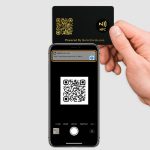User experience (UX) plays a critical role in the success of any customer engagement platform. A well-optimized platform ensures smooth interactions, making it easier for businesses to retain customers and boost satisfaction. With advancements in AI, automation, and analytics, businesses are refining their engagement tools to provide seamless user experiences. Enhancing UX in engagement platforms requires a combination of intuitive design, personalized interactions, and real-time responses.
The Impact of UX on Customer Engagement
A poor user experience can drive customers away, reducing engagement rates and affecting business growth. On the other hand, a well-structured platform keeps users engaged and fosters loyalty. The following factors highlight the significance of UX in customer engagement:
- Increased Customer Retention – A user-friendly engagement platform encourages customers to return, leading to long-term relationships.
- Higher Conversion Rates – Intuitive navigation and personalized interactions improve lead generation and sales.
- Reduced Support Costs – A well-designed platform reduces user frustration and minimizes support inquiries.
- Brand Reputation – A seamless UX enhances brand credibility and encourages positive customer feedback.
Key UX Elements for a Customer Engagement Platform
Intuitive and Simple Interface
An engagement platform must have a clean and clutter-free interface. Complicated navigation or excessive features can overwhelm users, leading to poor engagement. Businesses should focus on:
- Clear call-to-action (CTA) buttons
- Well-organized menus and categories
- Easy-to-read fonts and color contrast
- Mobile-friendly layouts for accessibility
Personalization for User-Centric Experience
Customers expect tailored experiences when using an engagement platform. By leveraging AI-driven analytics, businesses can provide personalized content, recommendations, and support. Some effective personalization techniques include:
- Adaptive chatbots for real-time assistance
- User-specific product recommendations
- Custom dashboards based on user preferences
- Automated email campaigns triggered by user behavior
Real-Time Responsiveness and Load Speed
A slow or unresponsive engagement platform leads to user frustration. Ensuring quick load times and responsive elements enhances UX. Key strategies include:
- Optimizing images and media for fast loading
- Using caching techniques to reduce server load
- Implementing content delivery networks (CDNs) for faster accessibility
- Regular performance testing and updates
AI-Powered Customer Support
Artificial intelligence improves user experience by offering instant solutions to customer queries. AI-driven chatbots, virtual assistants, and automated ticketing systems streamline customer interactions. Benefits of AI-powered support include:
- 24/7 availability without human intervention
- Quick and accurate responses based on past interactions
- Efficient handling of large volumes of queries
- Reduced waiting time for customer assistance
Enhancing Mobile UX in Engagement Platforms
With the growing reliance on mobile devices, optimizing UX for smartphones and tablets is essential. A mobile-friendly customer engagement platform should have:
- A responsive design that adjusts to different screen sizes
- Touch-friendly buttons and navigation
- Fast-loading mobile pages to prevent drop-offs
- App integrations for a seamless omnichannel experience
Accessibility and Inclusivity in UX Design
A successful engagement platform must cater to diverse user needs, including those with disabilities. Implementing accessibility features ensures a broader audience can navigate the platform effortlessly. Best practices include:
- Providing alternative text for images
- Enabling keyboard navigation for users with mobility issues
- Offering text-to-speech options for visually impaired users
- Using high-contrast themes for readability
Leveraging Data Analytics for UX Improvements
Data-driven insights help businesses identify user behavior patterns and optimize their customer engagement platform accordingly. Analyzing user interactions can provide:
- Heatmaps to track customer navigation paths
- A/B testing results for different UX elements
- Session recordings to detect usability issues
- Real-time feedback to enhance platform features
The Role of Gamification in User Engagement
Gamification elements, such as reward systems, interactive challenges, and achievement badges, make engagement platforms more interactive. Adding gamification:
- Encourages users to complete specific actions
- Increases participation rates and engagement
- Creates a sense of accomplishment and motivation
- Strengthens brand-user relationships
Security and Trust in UX Design
Customers need to feel secure while using an engagement platform. A strong UX strategy includes robust security measures to protect user data and privacy. Essential security features include:
- Encrypted connections for secure data transfer
- Multi-factor authentication for account safety
- Transparent privacy policies to build trust
- Regular security updates to prevent vulnerabilities
Key UX Elements for a Customer Engagement Platform
Intuitive and Simple Interface
An engagement platform must have a clean and clutter-free interface. Complicated navigation or excessive features can overwhelm users, leading to poor engagement. Businesses should focus on:
- Clear call-to-action (CTA) buttons
- Well-organized menus and categories
- Easy-to-read fonts and color contrast
- Mobile-friendly layouts for accessibility
Personalization for User-Centric Experience
Customers expect tailored experiences when using an engagement platform. By leveraging AI-driven analytics, businesses can provide personalized content, recommendations, and support. Some effective personalization techniques include:
- Adaptive chatbots for real-time assistance
- User-specific product recommendations
- Custom dashboards based on user preferences
- Automated email campaigns triggered by user behavior
Real-Time Responsiveness and Load Speed
A slow or unresponsive engagement platform leads to user frustration. Ensuring quick load times and responsive elements enhances UX. Key strategies include:
- Optimizing images and media for fast loading
- Using caching techniques to reduce server load
- Implementing content delivery networks (CDNs) for faster accessibility
- Regular performance testing and updates
AI-Powered Customer Support
Artificial intelligence improves user experience by offering instant solutions to customer queries. AI-driven chatbots, virtual assistants, and automated ticketing systems streamline customer interactions. Benefits of AI-powered support include:
- 24/7 availability without human intervention
- Quick and accurate responses based on past interactions
- Efficient handling of large volumes of queries
- Reduced waiting time for customer assistance
Future Trends in UX for Engagement Platforms
As technology evolves, UX in engagement platforms will continue to improve. Emerging trends shaping the future of customer engagement include:
- AI-Driven Hyper-Personalization – AI algorithms will provide more refined, customized experiences based on real-time user interactions.
- Voice and Gesture-Based Interfaces – Platforms will integrate voice commands and touchless interactions for enhanced accessibility.
- Augmented Reality (AR) Integration – Businesses will offer interactive AR experiences for better product engagement.
- Predictive Analytics for Proactive Engagement – AI-driven insights will allow businesses to anticipate user needs before they arise.
Final Thoughts
Enhancing UX in engagement platforms requires a blend of intuitive design, personalization, speed, and security. A well-optimized customer engagement platform improves user satisfaction, boosts retention, and drives business success. By leveraging AI, mobile-friendly designs, and data analytics, businesses can stay ahead in the competitive engagement landscape. Prioritizing UX ensures customers have a seamless and enjoyable experience, leading to long-term loyalty and positive brand perception.








